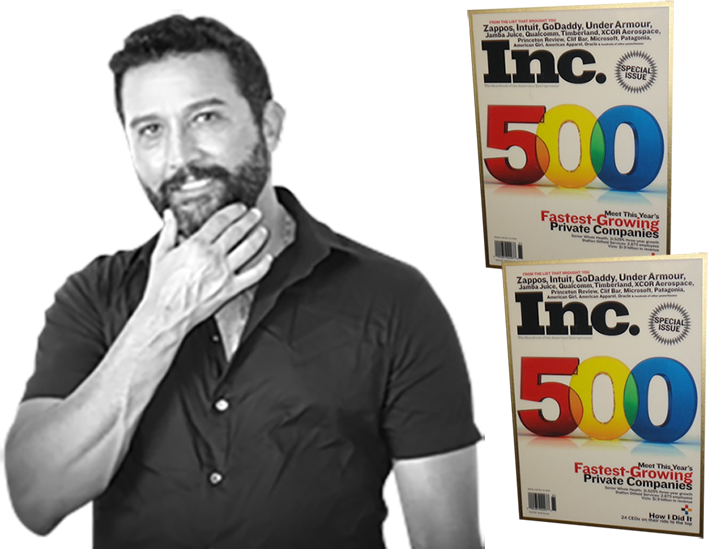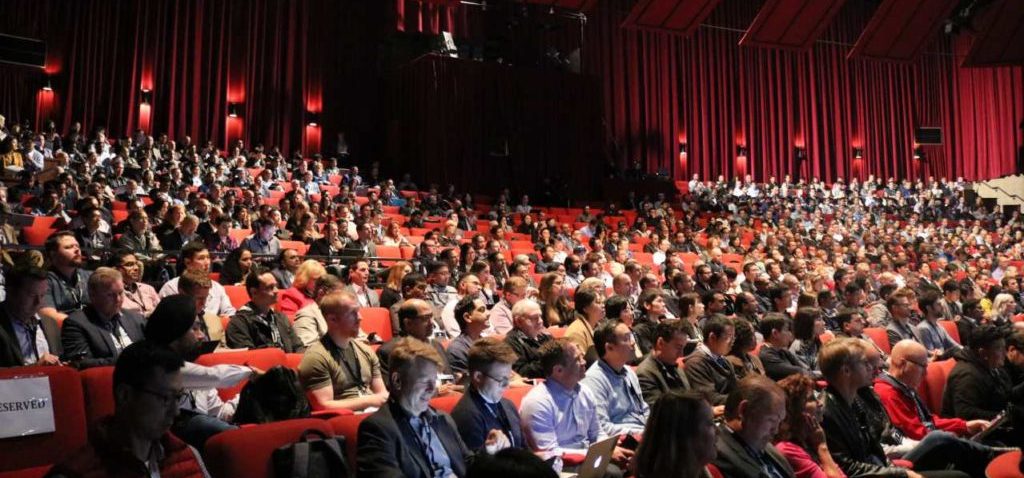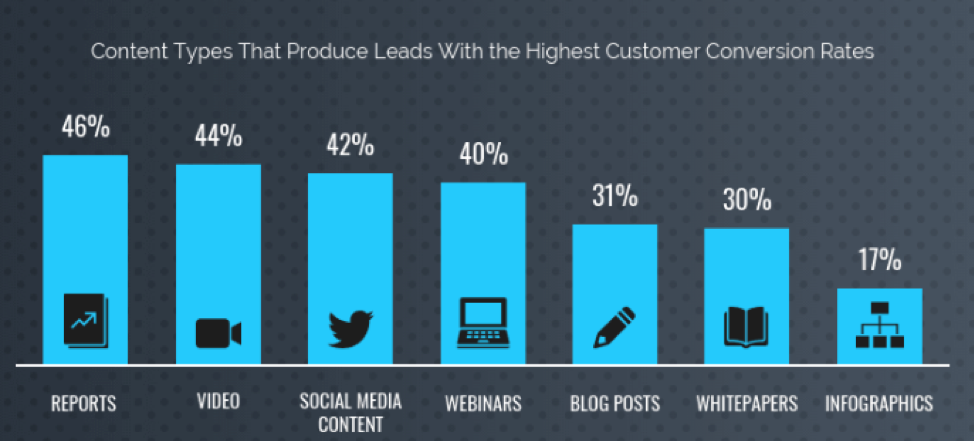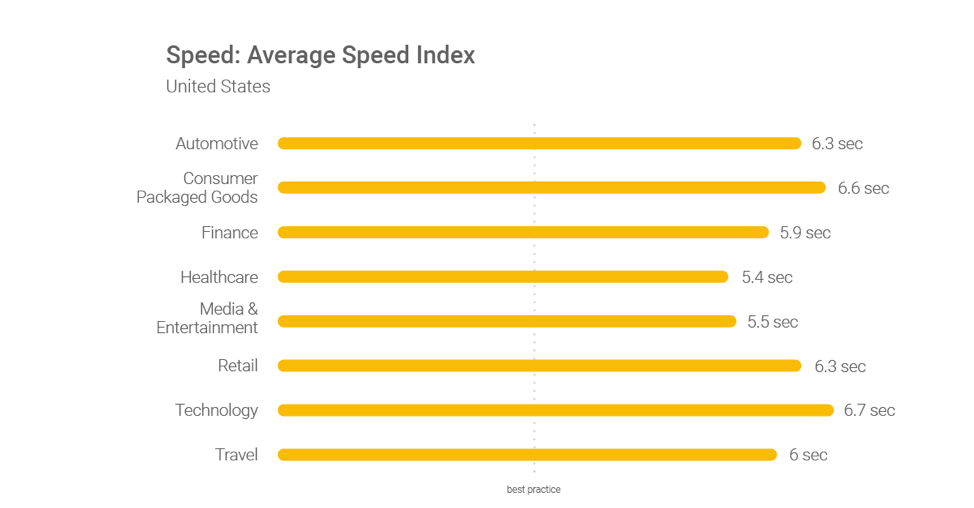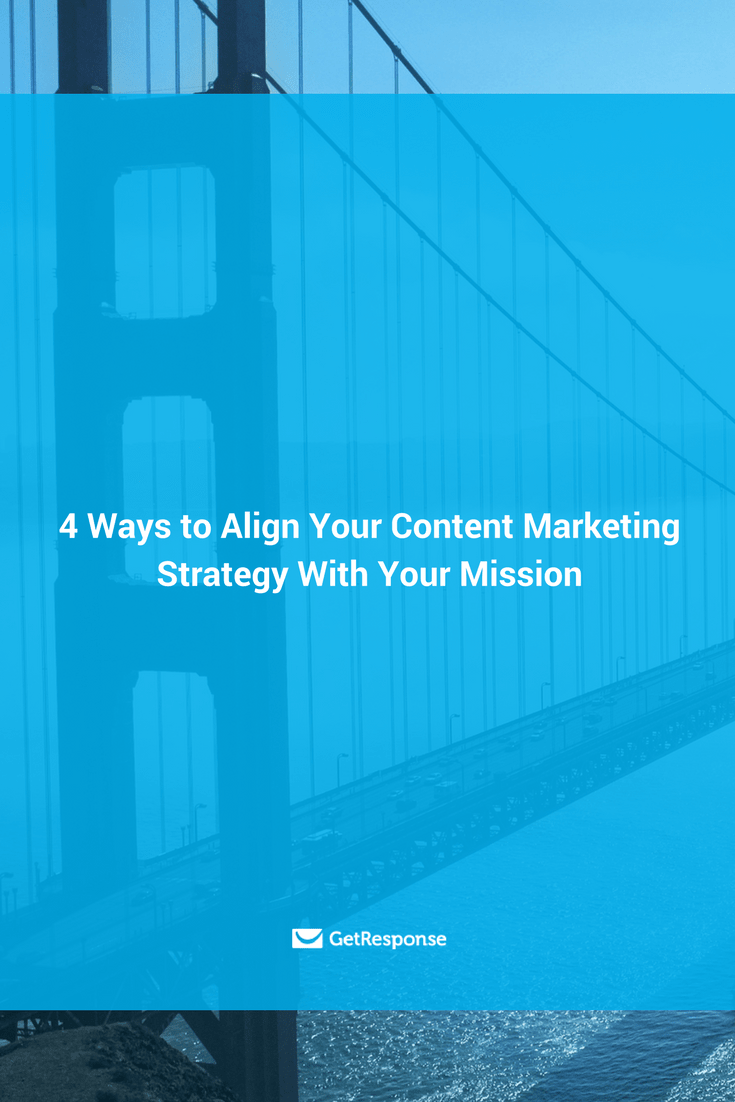2019 is here, and if you’re still running the same old ad campaigns from a year or two ago, it’s time to turn off cruise control.
As much as we would all love PPC tactics (and SEO for that matter) to stay the same, they don’t. Platforms change, provide new features and updates, and even dictate the new direction of advertising.
PPC is changing dramatically. In the last year alone, Google dramatically shifted AdWords into Google Ads, bringing countless new updates and features along with it. To meet these new changes, complacency isn’t viable anymore. We can’t cruise to the finish line.
Here are three ways that PPC is going to change in the coming year and three ways to prepare for it for a first movers advantage.
1. Less self-serving, more customer-serving
PPC advertising is a pretty self-serving venture when comparing the outcome for advertisers vs. consumers: you put out some ads with lead magnets in attempts to either convert traffic, build brand awareness, or generate some direct sales on your products or services.
While the customer does benefit in some cases, it’s usually not the main focus.
The main focus is on landing the sale. The lead. Generating another customer for your funnel. Putting together that lead magnet or landing page ASAP to get the customer to sign up for your eBook, webinar, or online course. Using XX conversion hacks to psychologically trick them into converting.
These tactics don’t just give the general “marketing” world a bad name, they also annoy people. A lot.
And I have bad news for advertisers: users aren’t susceptible to this anymore. Searchers and internet browsers alike crave value, not a snatch and grab of your information for further annoying marketing messages.
They want content and information that is valuable, not just a clickbait post designed to get their email. And your only hope in 2019 is to create better content and value. Don’t believe me?
Codeless tested multiple content services and surveyed marketing experts, all of which said the content didn’t provide enough value and that consumers wouldn’t resonate with it to purchase.
We get bombarded with enough of that junk in our daily lives via email:
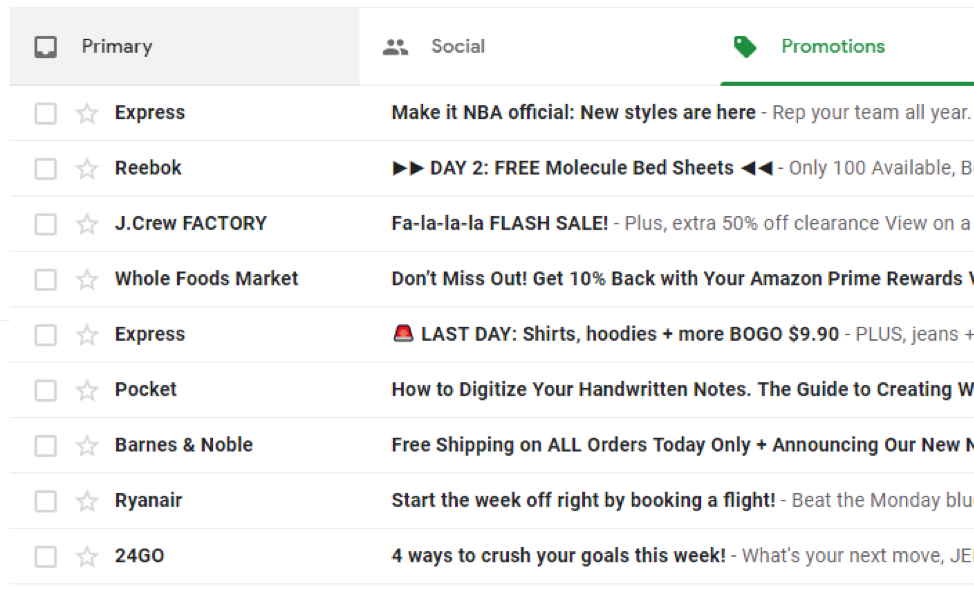
We simply don’t need more of it with PPC ads and subsequent content.
Now, study after study after study confirms that people are doing more research than ever before buying a product or paying for a service.
These studies conclude that nearly 90% of people research before buying. It’s no wonder that the DMA found that the average lead takes 7-13+ touches to generate a single viable lead.
So, what am I getting at here? The overall trend of PPC becoming less self-serving and more customer-serving to meet changing consumer actions. After all, customer satisfaction and solving customer problems is the lifeblood of continued sales and lifetime value.
I’ve already seen this trend come to fruition in 2018, too. The example I saw was nothing short of perfect, either. Let me show you.
Recently I conducted the following search on Google’s search network. Here were the top four ads ranking for my keyword search. Make a mental note if you notice anything:
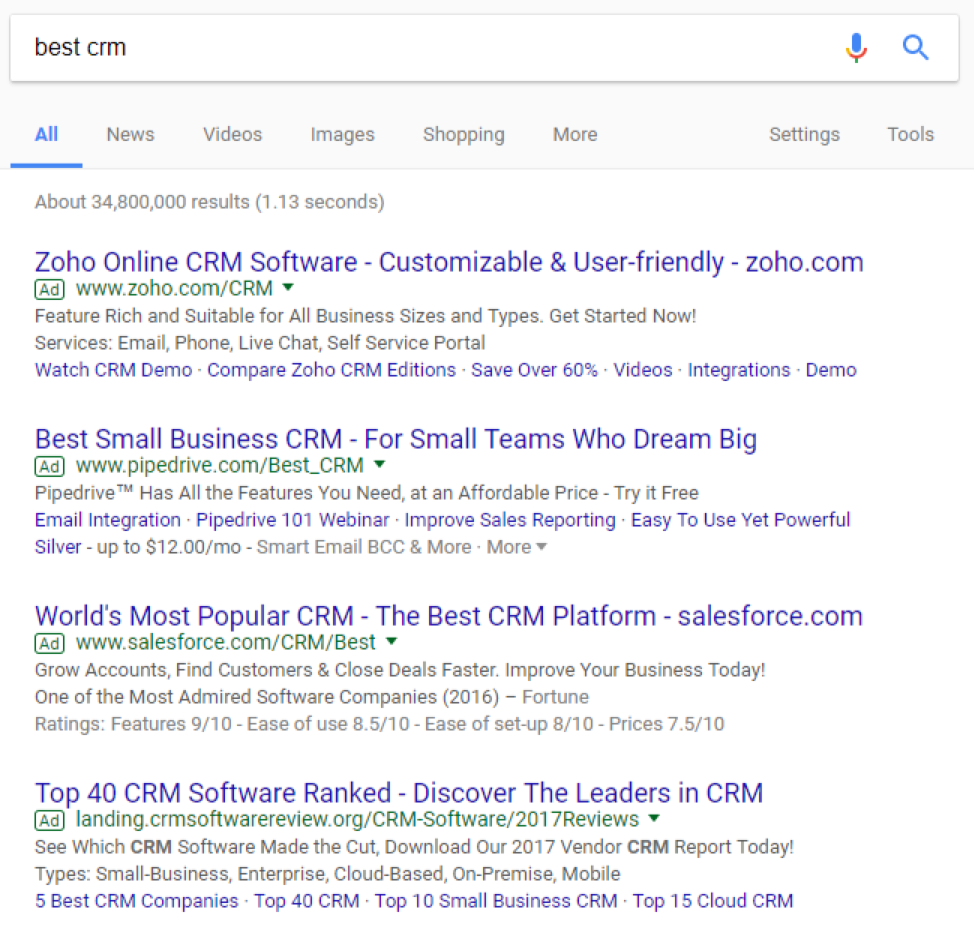
The first three ads ranking for this search at basically the same: my CRM is the best, click here and buy! But take a look at the fourth-ranking ad:

Top 40 CRM software ranked. Discover the leaders in CRM.
If that isn’t customer-serving value, I don’t know what is.
This ad perfectly matches searcher intent with a customer-centric ad that focuses on providing real, valuable, insightful research material. Instead of cramming their product down customer’s throats as “the best” (which we all know is BS), they provide instant value.
While I don’t have the PPC data to back it up, I’d be willing to bet $500 on red to say they got the majority of clicks. The lesson here is: provide value. While you’ve probably heard it before, it’s another thing to see it in practice, especially on PPC ads that cost money.
Another amazing PPC strategy for customer-centric value I saw was driving visits to a knowledge portal via remarketing to middle-of-the-funnel leads:
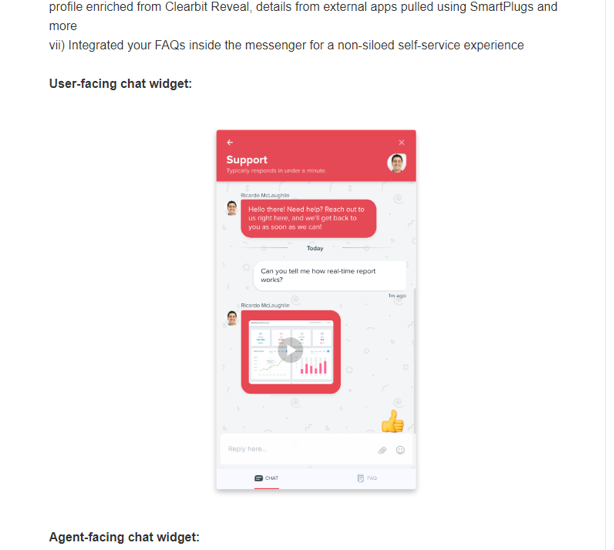
Instead of trying to push sales messages, they sought to help the user understand their tool better, producing more value and success for each client.
On top of that, writing better PPC ads is a surefire way to be less self-serving.
Take a hard look at your current ads. Are they good? Are they asking for too much? What’s the tone? Are you measuring intent?
All of this can seem overwhelming, but it’s actually easy. How? By combining a few cool PPC tools.
First, I like to plug my ad copy ideas into a grammar tool like Grammarly, because you can have the tool assess for goals, like specific tones, intent, audience, and more:
Pretty amazing right? You can create potentially hundreds of ad variations by changing the style, emotion, audience, and intent.
Then, use Google’s new ad strength tool to measure how unique and impactful your ad will be:
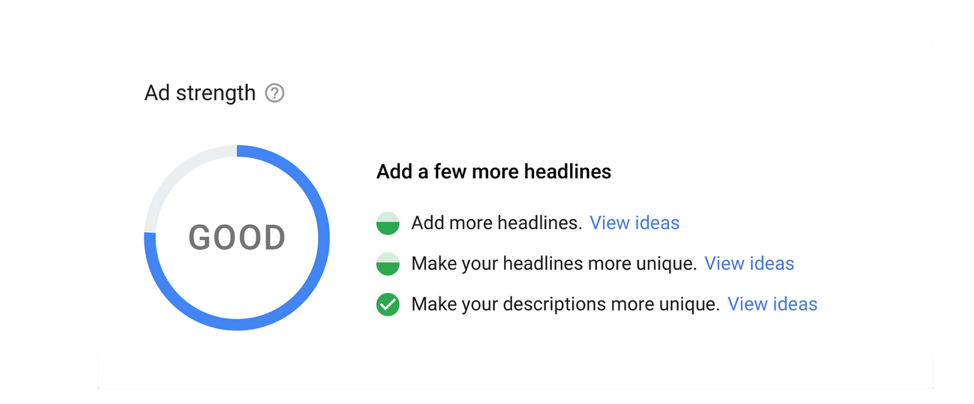
This is a surefire way to create new, better ads that are less self-serving.
So, how else can you prepare for a customer-focused landscape with PPC? Here are a few ways:
- Assess keyword intent: are you matching what the customer is expecting? Or are you just pushing product?
- Value: are you trying to get them to convert on a dime? Or are you building up their trust in your brand by providing the right research tools at the right time?
- Start focusing the content you offer users on PPC towards valuable information they want. According to State of Lead Gen 2018, these are the most valuable forms of content users are looking for:
So, give it to ‘em!
- Relationships: are you developing relationships with your PPC campaigns? As in, are you genuinely helping, connecting, and symbiotically growing with your potential customers?
- Personality: are you putting your brand personality into your PPC campaigns and landing pages? Customers love to connect with genuine brands that solve pain points while sharing a unique voice and authentic personality. More interactive content like podcasts, videos, webinars, and long-form blog posts will entertain and inform users capture users in the middle of the funnel.
2. Omnichannel strategies will win big
Multichannel has been around for a long time. But omnichannel is the new kid on the block with promising performance:
What’s the difference between the two?
Multichannel is simply advertising on multiple channels, like Facebook and Google Ads. This is a very common tactic that is a great step for anyone using a single platform. Not only can you reach more people, but you can reach your target market in different formats.
The problem with multichannel is that by switching channels, your experience “resets.” This makes you prone to receiving marketing messages that you already have gotten before and aren’t matching your buying stage.
For instance, this is an ad for a brand on Facebook:

And look at how the ad experience doesn’t relate when searching on Google, despite me engaging heavily with the brand previously:

My experience turns into a first-time click, even though I am deep in the funnel.
That’s not good.
Omnichannel, on the other hand, takes multichannel to a new level. Omnichannel is a continued experience that happens on multiple platforms, picking up where the user left off.
For example, engaging with a lead magnet on Facebook and then showcasing an ad for a second, accompanying lead magnet on Google.
In terms of PPC, we can omnichannel to reach the same audience on multiple channels, pushing them down the funnel in an organized sequence.
Instead of solely relying on one channel to do one tactic, we can combine multiple for a smoother buying process. There are tons of ways to run omnichannel and cross-device advertisements now.
For instance, here are a few that you could establish in just a few minutes of extra effort compared to a standard campaign:
- Use Google Ads as the starting point. Using the Search Network, target middle of the funnel keywords to bring in relevant, qualified traffic. Next, with a Facebook Pixel installed, remarket those visitors with content related to the landing page they interacted with from the search network ad.
- Use Facebook as your starting point and craft brand awareness ads to a new audience (or a lookalike). Build trust and authority, and then target them in Google’s search network using remarketing lists for search ads (RLSAs).
- Or, use Facebook to capture emails for dirt cheap and then continue the same experience on an email campaign. This is a strategy that kids shoe brand Wee Squeak used, generating 600 emails with $90 on Facebook and then delivering drip campaigns to drive sales online.
These are just great options in an almost infinite list of possibilities.
But, you get the point: don’t just use one channel.
Don’t feel limited to one or the other. We often see comparisons like “Which is Better: Google Ads or Facebook.”
Instead, we should be combining them for big wins.
3. Mobile is everything now
For years we have been told about the incoming mobile takeover.
Even so, most mobile PPC campaigns aren’t mobile-optimized.
Ever search for something on Google, click the first ad on mobile and find a landing page that has one of the following issues:
- Takes too long to load (past three seconds and you will suffer major traffic loss)
- The user experience isn’t optimized for mobile
- Converting is a pain due to long forms
The issues go on and on. PPC optimization goes way beyond just writing mobile ad types on Google Ads now.
It’s full-scale optimization for the mobile-index and more. If that means building a new mobile site, it means you have to build one. 51% of people use WordPress, and it’s free. You can’t wait any longer to be mobile ready and you have no excuse.
Whether you just started a blog, are running an ecommerce site with WordPress, or are a SaaS company, mobile experience must be front of mind.
To keep up with the trends, focus first on mobile speed. If your site isn’t loading within the first three seconds of a click, you will be wasting time on anything else you do:
No amount of A/B testing and tweaking can outrun a slow site.
Use tools like Test My Site to see what elements you can eliminate or manage for a faster site.
Once you’ve improved speed, you can start to optimize campaigns to bit on mobile traffic. To do this, increase bids on mobile devices and decrease bids on desktop in your Google Ads campaign settings:
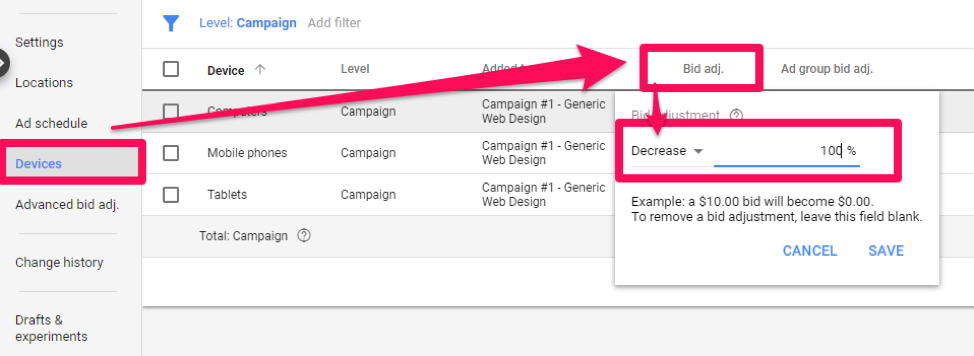
This will ensure your traffic is only mobile device searchers even on search network campaigns.
Also, this will have a two-fold benefit:
- Bringing in more mobile traffic
- Ability to test for mobile as you will have a significant amount of traffic to test against! People often test too early with too little of traffic, leading to statistically insignificant tests.
Mobile experiences for ads don’t have to be generic either. If your site isn’t well optimized for mobile, try something new.
Don’t be afraid to test new strategies. For instance, one of the most creative mobile PPC strategies I’ve ever seen was using a chatbot as the landing page in a PPC campaign:
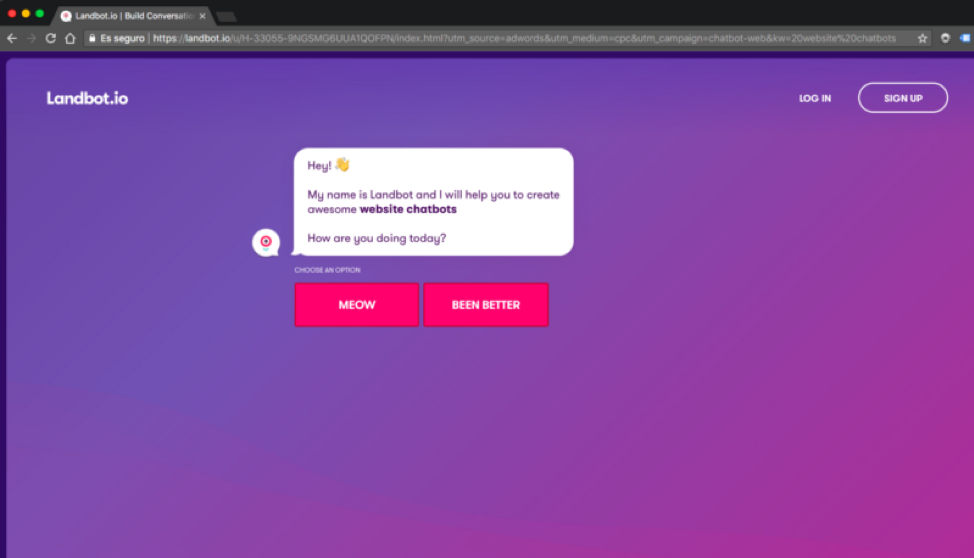
This campaign by Fran at Landbot generated a 100% increase in his conversion rates. That’s right, he set up a landing page on his website so that every PPC click on Google search directed people into a chatbot conversation.
Amazing!
Mobile is everything now. And it’s time for all digital marketing entrepreneurs to improve our mobile PPC.
Conclusion
It’s tempting to sit back and let your 2018 campaigns go on autopilot in 2019. Especially if they are working.
And if they are working, there is no need to pause them.
But, PPC is changing right before our eyes. Google is constantly updating their platform and optimizing for the consumer, not the advertiser.
Google cares about pleasing consumers, and advertisers will need to adopt this strategy ASAP to remain relevant.
Omnichannel experiences are starting to crop up from Google Ads to Facebook Ads.
Google is continually putting stock into mobile development, too. No longer are the days of sub-par mobile ads for a quick call.
Now, mobile should be the center of your PPC strategy.
It’s time to get moving on your 2019 strategy and plan for these trends in advance.
Author:

Adam Enfroy is a writer and manages strategic partnerships for BigCommerce. With 10+ years of digital marketing experience, he’s passionate about leveraging the right strategic partnerships, content, and software to scale digital growth. Adam lives in Austin, TX and writes about selling online courses and scaling your online influence on his blog, adamenfroy.com.
You can connect with him on Twitter and LinkedIn.
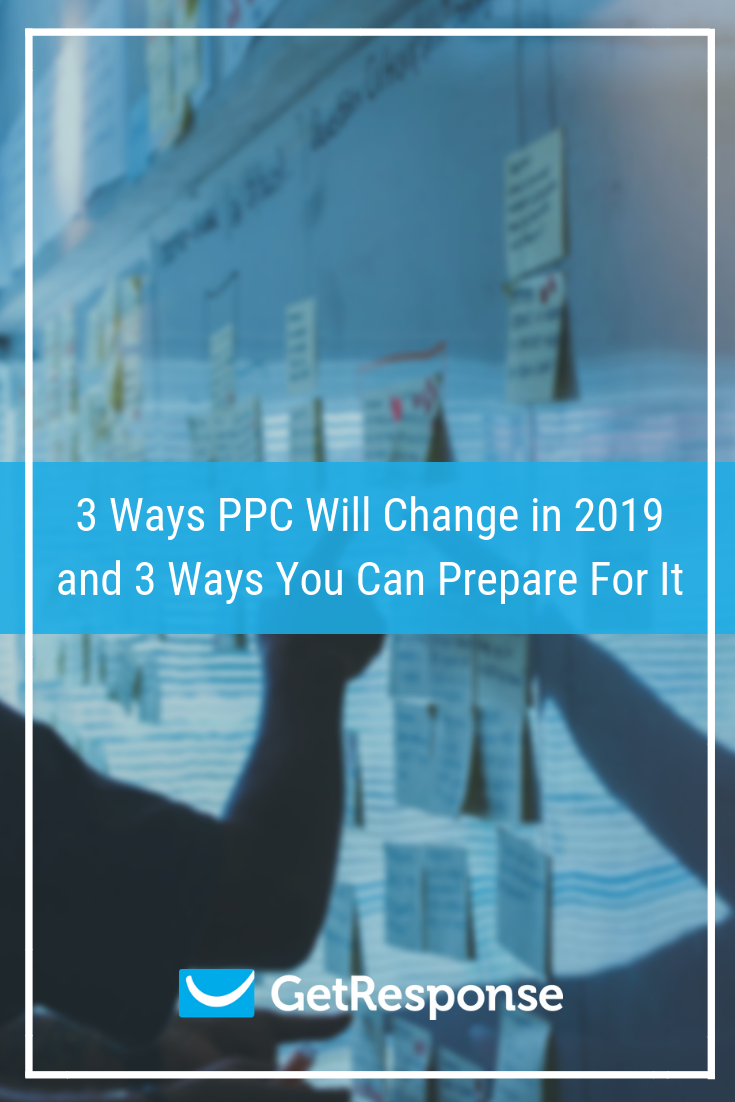
The post 3 Ways PPC Will Change in 2019 and 3 Ways You Can Prepare For It appeared first on GetResponse Blog – Online Marketing Tips.

